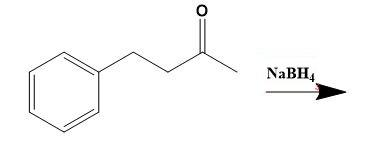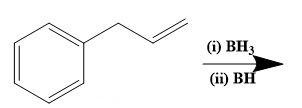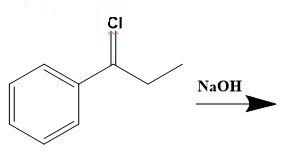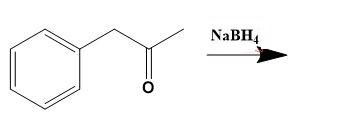
Answer
444.9k+ views
Hint: The reduction of aldehyde or ketone by Grignard reagent gives the corresponding alcohol easily. So, there is a chance of having a right answer in option (A) and (D). Also, formation of alcohol can occur when the halide group is replaced by hydroxyl group. Thus, option (C) can be the answer.
Complete step by step solution:
Let us now firstly see what would really 3-phenyl-2-propanol look like as this would make it easy to clear the discussion.
3-phenyl-2-propanol:
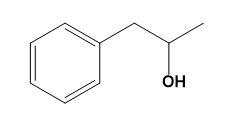
From the above molecular structure, we can see that option (C) cannot give the required molecule. Also, the double bond in Cl cannot justify any reaction. Now, seeing the option (A), we can see that the resulting product of the given reduction cannot be the 3-phenyl-2-propanol. Thus, now we only have option (D) as a better choice. Let us check the same. Option (D) states that,
Reduction of phenylacetone by \[NaB{{H}_{4}}\]- Generally, ketone is reduced by \[NaB{{H}_{4}}\] to give the alcohol by the following mechanism,
1. Nucleophilic attack by the hydride ion.
2. The alkoxide is protonated and methanol is used as a proton source.
\[NaB{{H}_{4}}\] is the complex metal hydride i.e. sodium borohydride. It is less reactive than that of $LiAl{{H}_{4}}$. On normal basis the reaction can be explained as,

Thus, for solving given illustration we can say that, Phenylacetone reduces using \[NaB{{H}_{4}}\] to give 3-phenyl-2-propanol a
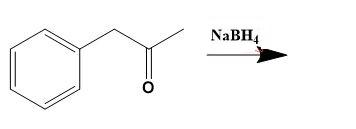

Therefore, option (D) is correct.
Note: Do note that we can have many choices to get the required answer, so try to check all the options to get the correct answer. Sometimes, it is so easy to get the answer as above and still check the options because the exceptions can also play a major role in solving chemical reactions.
Complete step by step solution:
Let us now firstly see what would really 3-phenyl-2-propanol look like as this would make it easy to clear the discussion.
3-phenyl-2-propanol:

From the above molecular structure, we can see that option (C) cannot give the required molecule. Also, the double bond in Cl cannot justify any reaction. Now, seeing the option (A), we can see that the resulting product of the given reduction cannot be the 3-phenyl-2-propanol. Thus, now we only have option (D) as a better choice. Let us check the same. Option (D) states that,
Reduction of phenylacetone by \[NaB{{H}_{4}}\]- Generally, ketone is reduced by \[NaB{{H}_{4}}\] to give the alcohol by the following mechanism,
1. Nucleophilic attack by the hydride ion.
2. The alkoxide is protonated and methanol is used as a proton source.
\[NaB{{H}_{4}}\] is the complex metal hydride i.e. sodium borohydride. It is less reactive than that of $LiAl{{H}_{4}}$. On normal basis the reaction can be explained as,

Thus, for solving given illustration we can say that, Phenylacetone reduces using \[NaB{{H}_{4}}\] to give 3-phenyl-2-propanol a


Therefore, option (D) is correct.
Note: Do note that we can have many choices to get the required answer, so try to check all the options to get the correct answer. Sometimes, it is so easy to get the answer as above and still check the options because the exceptions can also play a major role in solving chemical reactions.
Recently Updated Pages
Who among the following was the religious guru of class 7 social science CBSE

what is the correct chronological order of the following class 10 social science CBSE

Which of the following was not the actual cause for class 10 social science CBSE

Which of the following statements is not correct A class 10 social science CBSE

Which of the following leaders was not present in the class 10 social science CBSE

Garampani Sanctuary is located at A Diphu Assam B Gangtok class 10 social science CBSE

Trending doubts
A rainbow has circular shape because A The earth is class 11 physics CBSE

Which are the Top 10 Largest Countries of the World?

Fill the blanks with the suitable prepositions 1 The class 9 english CBSE

Which of the following was the capital of the Surasena class 6 social science CBSE

How do you graph the function fx 4x class 9 maths CBSE

The Equation xxx + 2 is Satisfied when x is Equal to Class 10 Maths

Give 10 examples for herbs , shrubs , climbers , creepers

Difference between Prokaryotic cell and Eukaryotic class 11 biology CBSE

Who was the first Director General of the Archaeological class 10 social science CBSE

